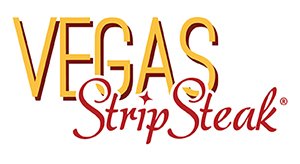Major Beef
- Posted on 9th July 2012
- in Dr. Tony Mata, Media Coverage, New Steak, Participating Restaurants
- by stripmin
There’s a new steak in town — the Vegas strip — and it’s vying for a piece of the local action. But is it a contender, or merely a pretender to our beloved hometown cut?
By CLAUDINE KO
Last Updated: 11:08 AM, July 10, 2012
Posted: 11:07 PM, July 9, 2012
Chef Harold Moore is experimenting with a slab of steak inside the kitchen at his contemporary American restaurant Commerce, tucked away on a crooked street in Greenwich Village. He peels off the meat’s clear plastic sheath, which has been used to cook it in a low-temperature water bath, sous-vide style.
“It eats best at rare, but beyond that it gets tough,” says Moore, explaining why he chose this forgiving French technique.
Next, a familiar hiss and crackle erupts as he sears the steak in a hot frying pan, deepening its pallor into a rich molasses. It looks just like a classic New York strip, is just as tender and smells like one, too — only it’s not.
Get ready, New Yorkers. There’s a new meat in town, and it’s called the “Vegas strip.” Billed as a leaner and cheaper alternative to the world-famous New York strip, the shoulder cut is jumping into the ring — and local restaurateurs are betting it’s a winner.
“No one even knows what it is yet, and they want it,” says Pat
LaFrieda Jr., CEO of Pat LaFrieda Meat Purveyors, the sole distributors of the Vegas strip in the tri-state area. Late last month, he received his first 10 cases — roughly 250 pounds — and landed three customers: Moore’s Commerce, where it’s being served with crushed potatoes, chanterelles and old-fashioned bordelaise sauce ($26); Kin Shop in Greenwich Village, where chef Harold Dieterle will sell it as a special, sliced and grilled over a Thai-style salad with chilies, cucumbers, red onions and mint ($25); and Hudson Street’s Red Farm, in its most popular dish, the spicy crispy beef ($16).
“Usually when you get a new cut of meat, it takes months to [catch on],” says LaFrieda. Case in point: The flat iron steak took about three years to gain traction, and when it did, circa 2001, its price doubled.
Since its debut, orders for the Vegas strip have already quintupled.
“Over the past five years, I’ve been playing with off-the-path, obscure muscles,” says Tony Mata, the Texas-based meat scientist who is staking claim to the Vegas-strip discovery. “Then I stumbled onto this one. It is not a cut that has an established identity.”
He won’t reveal the exact muscle, in hopes of patenting the roughly 14-ounce, ¾-inch-thick, yet very lean strip — which he says has tested in labs as having equal tenderness to a New York strip. But he will say it comes from the shoulder area of Black Angus cattle and, in recent history, has been going straight to the grind pile.
Some say it should stay there, pledging their allegiance to the city’s gold standard: the New York strip, a cut from the short loin that is both tender and also richly marbled.
“I’m unimpressed, to say the very least,” says executive chef John Schenk, who sells a 16-oz. boneless New York strip for $45 at Strip House on East 12th Street.
“We’re named after the New York strip. It’s the rock that the Strip House was built upon. I’m dealing with trying to find the greatest, well-marbled prime meats. The Vegas strip steak doesn’t offer anything to me. There was nothing there. I was like, ‘Uh, pass.’ ”
Willie Degel, owner of Uncle Jack’s Steakhouse, says the new Vegas cut amounts to a marketing ploy. “They try to wow and jazz it. I’m a purist. I love my dry-aged beef, and I’m going to sell that.”
Why the need for a new cut? According to LaFrieda, since 2008, the international demand for American prime meats has peaked, and our beef industry is now pushing for economy cuts that utilize all the parts of the cattle.
“The economy cuts that the butchers take home is the trend in beef now,” says LaFrieda.
One of the things that makes the Vegas strip so cost-efficient is that it reaches maximum tenderness after seven days — rather than three weeks for dry-aged prime meats.
“You can’t get a prime steak for less than $40 to $45, whereas you can easily have a 10-ounce. portion of the Vegas strip somewhere in the low $25-and-under range, which is nice,” says Dieterle.
“If it’s anywhere near as tender as a sirloin, I think it’ll be a hit,” says Bill Oliva, the executive chef at venerable Delmonico’s in the Financial District, who plans to try it. “Plus, we have the Grill Room, which is a little bit less expensive, so it might be a perfect fit.”
Still, Moore knows the Vegas strip is a gamble.
“Right now, it’s a sell,” says Moore, who reveals that the steak he’s serving is, in fact, not even a single piece of meat.
Rather, he fuses two strips using a gelatin-like substance derived from sea vegetables to mimic the girth of the Gotham competition. “The New York strip will sell itself. You need no marketing or coaxing. This is offering a beef option to someone looking to spend less money.”
Where else might it be a good fit?
“I hope it has a place in a steakhouse per se,” adds Schenk, “though more like an Applebee’s or a Chili’s.”






